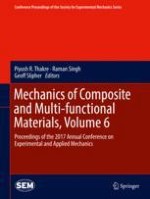2018 | Book
Mechanics of Composite and Multi-functional Materials, Volume 6
Proceedings of the 2017 Annual Conference on Experimental and Applied Mechanics
Editors: Dr. Piyush R Thakre, Dr. Raman Singh, Geoff Slipher
Publisher: Springer International Publishing
Book Series : Conference Proceedings of the Society for Experimental Mechanics Series
